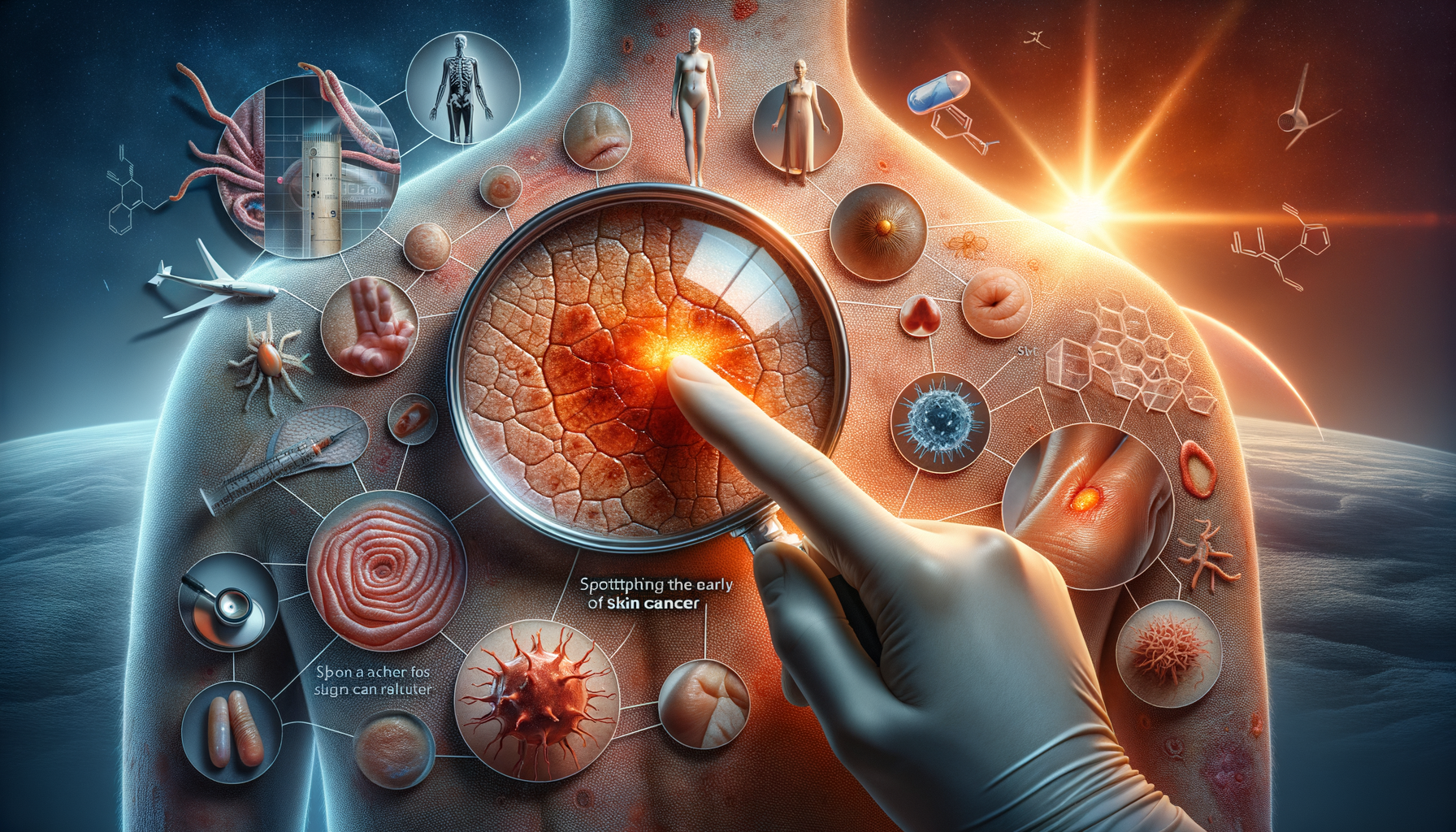Understanding Skin Cancer
Skin cancer is the most common form of cancer worldwide, affecting millions annually. It primarily arises from the overexposure to ultraviolet (UV) rays from the sun or tanning beds, which can damage the skin’s DNA. The most prevalent types of skin cancer include basal cell carcinoma, squamous cell carcinoma, and melanoma. Each type varies in severity and potential for metastasis, with melanoma being the most dangerous due to its ability to spread to other parts of the body.
Recognizing the early signs of skin cancer is crucial for effective treatment. While basal cell carcinoma often appears as a translucent bump, squamous cell carcinoma might present as a scaly patch. Melanoma is particularly insidious, often resembling a mole but with distinct characteristics. Understanding these differences is vital for early detection and intervention.
It’s essential to note that skin cancer can affect anyone, regardless of their skin tone. While individuals with fair skin are at a higher risk, those with darker skin tones are not immune. Regular self-examinations and awareness of changes in the skin are key preventive measures.
Identifying Suspicious Moles and Spots
Moles and skin spots are common, but certain changes can signal potential issues. The ABCDE rule is a helpful guide in identifying suspicious moles:
- Asymmetry: One half of the mole does not match the other.
- Border: Edges are irregular, ragged, or blurred.
- Color: The mole contains multiple colors or shades.
- Diameter: Larger than 6mm (about the size of a pencil eraser).
- Evolving: Changes in size, shape, or color over time.
While these guidelines are useful, not all skin cancers fit the ABCDE criteria. Some melanomas can be smaller or lack color variation. Therefore, any new growth or change in an existing mole should be evaluated by a healthcare professional.
In addition to moles, other signs to watch for include new skin lesions that bleed, itch, or do not heal. Paying attention to these symptoms can lead to earlier diagnosis and better treatment outcomes.
The Role of Sun Protection
Preventing skin cancer starts with protecting your skin from UV exposure. Sunscreen is a crucial tool in this effort. It should be applied generously and regularly, particularly after swimming or sweating. Look for a broad-spectrum sunscreen with an SPF of at least 30.
In addition to sunscreen, wearing protective clothing, such as wide-brimmed hats and long sleeves, can further shield your skin from harmful rays. Seeking shade during peak sun hours, typically from 10 a.m. to 4 p.m., is also advisable.
For those who enjoy tanning, it’s important to understand the risks associated with tanning beds. These devices emit UV radiation that can significantly increase the risk of developing skin cancer. Embracing natural skin tones and using self-tanning products as a safer alternative can reduce this risk.
Regular Skin Checks and Professional Screenings
Regular self-examinations can help detect skin cancer early. Set aside time each month to check your skin, using a mirror to inspect hard-to-see areas. Look for new growths or changes in existing moles.
Annual skin examinations by a dermatologist are recommended, especially for individuals with a history of skin cancer or those at higher risk. Dermatologists can use tools like dermoscopy to examine suspicious lesions more closely, enhancing the chances of early detection.
Professional screenings are particularly important for those with numerous moles or atypical moles. A dermatologist can monitor these moles for any changes and provide guidance on preventive measures.
Conclusion: The Importance of Awareness and Action
Awareness and early detection are key in the fight against skin cancer. By understanding the early signs, protecting your skin from UV exposure, and regularly checking your skin, you can significantly reduce your risk. If you notice any changes or have concerns, consult a healthcare professional promptly.
Taking proactive steps not only aids in early diagnosis but also improves treatment outcomes. Remember, when it comes to skin cancer, early action can make all the difference. Stay informed, protect your skin, and prioritize regular check-ups to ensure your health and well-being.




Leave a Reply